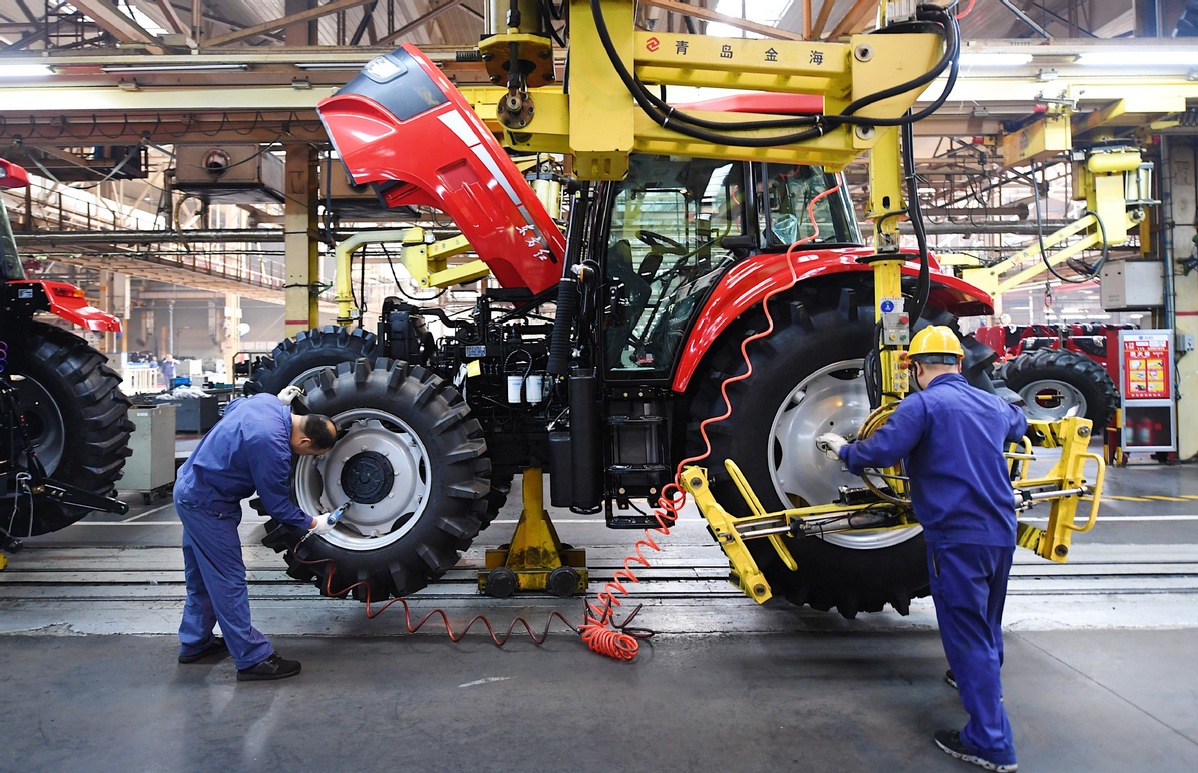Progress with stability will mean resolving bubbles via controls, regulations
By Li Xunlei | China Daily | Updated: 2021-08-30 09:44

Making progress while maintaining stability will continue to be the main features of China's economic policy, and policy easing will not be China's only approach to coping with an economic slowdown as the country also makes efforts on several other fronts.
Major economic indicators for July have recently been released. Most of these figures strongly suggest that the pressure of an economic slowdown is mounting. For example, export growth is slowing down, and there has been a decline in real estate sales. Automobile sales have also signaled negative growth.
The reserve requirement ratio cut in July indicates that the country's monetary policy will move to another round of easing, which means that cuts in both the RRR and interest rates are possible.
Since July, affected by the spread of the Delta variant, tourism, catering services, hotels and transportation were all severely hit, which resulted in the slowdown of the services sector revenue growth and led to increasing downward economic pressure. Therefore, the spread of the Delta variant has not only affected the global economy, but also had a negative impact on the Chinese economy.
However, although China's annual GDP growth rate for this year may come in lower than the expected 8 percent to 8.5 percent, this year's targeted GDP growth rate of above 6 percent, as proposed in the Government Work Report, can certainly be achieved.
Therefore, expectations for countercyclical policies should not be too high. The recent meeting of the Political Bureau of the Communist Party of China Central Committee also underlined "cross-cyclical adjustment". This is an adjustment to and upgrading of the idea of the "countercyclical adjustment policy", and it is also a strategic choice made in response to medium and long-term economic development. Due to last year's base effect, even without any stimulatory policies, China will surely reach its growth target for this year. And this means there will be a time window to focus on resolving long-standing structural problems in the nation's economy.
For example, the ideas of strengthening antimonopoly efforts, containing disorderly expansion of capital and ensuring fair market competition earlier this year-as well as enhancing regulation over internet giant firms and regulating off-campus tutoring to ease burden on students alongside green development-are all part of China's efforts to reform and improve the economic and social environment.
However, reform always comes at a cost. The off-campus tutoring industry is a huge market with a large number of employees. Overhauling these businesses will lead to unemployment for some. Also, the goal of reaching carbon neutrality by 2060 will lead to higher costs for some smaller businesses related to certain industries, and this may affect employment as well.
Taking a mid to long-term perspective, China needs to grow its economy through innovation and technological progress. Yet, in the process of reform and overhaul, attention is truly needed on fronts such as employment and financial data-especially in the rapidly growing real estate sector. It is important to determine if there is any cashing out crisis among investors due to a leverage ratio that is too high.
Though China has set a goal of doubling total economic volume or per capita income by 2035, there is no growth target in the 14th Five-Year Plan (2021-25). Therefore, there should be no expectations about extreme policy easing in sustaining growth for this year. Nor should there be worries about how harsh reform measures may turn out to be going forward. I believe all reform steps and policies will stick to the main feature of making progress while maintaining stability and ensuring there are no systemic risks.
Also, against the backdrop of a spreading Delta variant, China's comparative advantage in governance and economy has become notable.
The biggest economic problem brought about by the pandemic has been the destruction of global industry and supply chains, leading to economic difficulties or rising operating costs, including rising commodity prices, inflationary pressure and a high number of corporate bankruptcies.
Since China has been very effective in containing the pandemic, the country has suffered basically the least damage worldwide. The COVID-19 situation has shown that China has strong capacity in governance and control. Therefore, it can also be anticipated that China will work to resolve bubbles-especially in the property sector-via controls and regulations. With the entire international community stepping into an era of big data, policy needs to be more well-calibrated and targeted, and more effective than decades ago.
Most of the economic theories put forward by economists in history are based on the premise of poor data availability in the past. Now, in the era of big data and artificial intelligence as well as the digital economy, scientific management and control are needed. It is probably more effective than the "invisible hand" of the market, at least when global structural problems in our times are getting increasingly serious.
China's policy mix issued since the start of this year shows that the country will work to resolve some of the long-standing structural issues in its economy on the fronts of environmental improvement, technology development and social justice.
Currently, the country is also scaling up support for certain groups of small and medium-sized enterprises that are specialized and innovative-a move in sharp contrast to the restrictions on disorderly expansion of super-large monopolistic enterprises.
The author is chief economist at Zhongtai Securities Co Ltd.
The views don't necessarily reflect those of China Daily.























